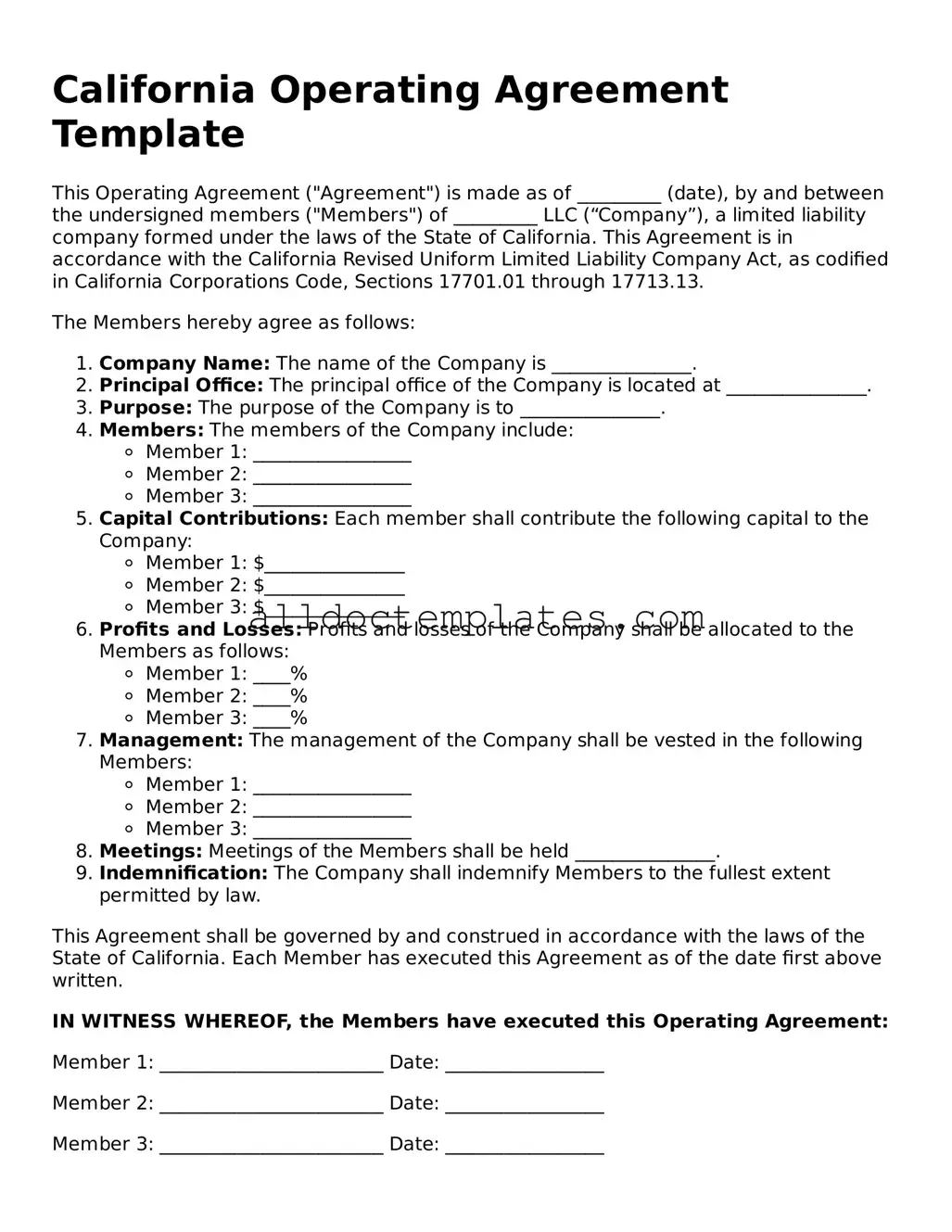California Operating Agreement Template
This Operating Agreement ("Agreement") is made as of _________ (date), by and between the undersigned members ("Members") of _________ LLC (“Company”), a limited liability company formed under the laws of the State of California. This Agreement is in accordance with the California Revised Uniform Limited Liability Company Act, as codified in California Corporations Code, Sections 17701.01 through 17713.13.
The Members hereby agree as follows:
-
Company Name: The name of the Company is _______________.
-
Principal Office: The principal office of the Company is located at _______________.
-
Purpose: The purpose of the Company is to _______________.
-
Members: The members of the Company include:
- Member 1: _________________
- Member 2: _________________
- Member 3: _________________
-
Capital Contributions: Each member shall contribute the following capital to the Company:
- Member 1: $_______________
- Member 2: $_______________
- Member 3: $_______________
-
Profits and Losses: Profits and losses of the Company shall be allocated to the Members as follows:
- Member 1: ____%
- Member 2: ____%
- Member 3: ____%
-
Management: The management of the Company shall be vested in the following Members:
- Member 1: _________________
- Member 2: _________________
- Member 3: _________________
-
Meetings: Meetings of the Members shall be held _______________.
-
Indemnification: The Company shall indemnify Members to the fullest extent permitted by law.
This Agreement shall be governed by and construed in accordance with the laws of the State of California. Each Member has executed this Agreement as of the date first above written.
IN WITNESS WHEREOF, the Members have executed this Operating Agreement:
Member 1: ________________________ Date: _________________
Member 2: ________________________ Date: _________________
Member 3: ________________________ Date: _________________
